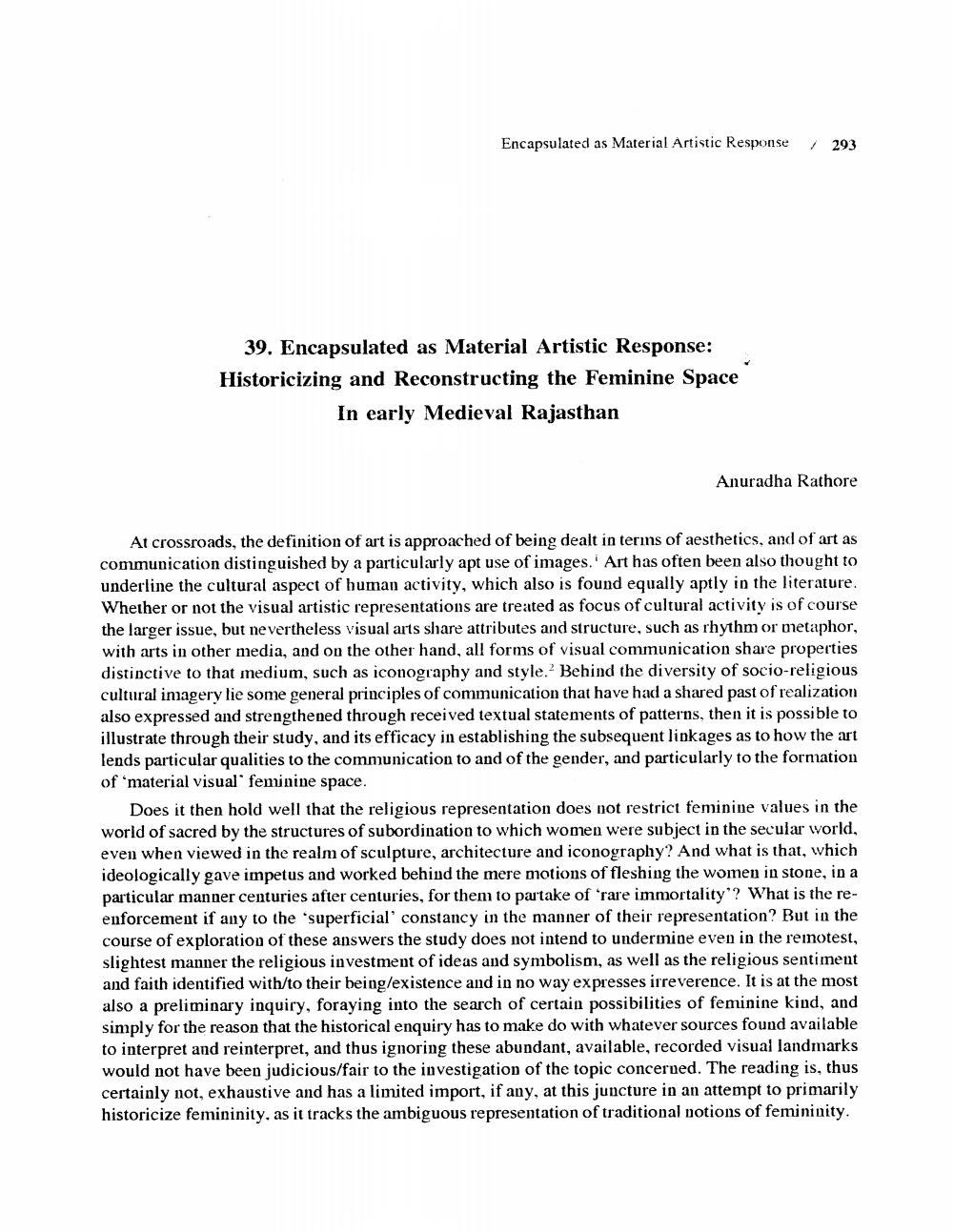________________
Encapsulated as Material Artistic Response
293
39. Encapsulated as Material Artistic Response: Historicizing and Reconstructing the Feminine Space
In early Medieval Rajasthan
Anuradha Rathore
At crossroads, the definition of art is approached of being dealt in terms of aesthetics, and of art as communication distinguished by a particularly apt use of images.' Art has often been also thought to underline the cultural aspect of human activity, which also is found equally aptly in the literature. Whether or not the visual artistic representations are treated as focus of cultural activity is of course the larger issue, but nevertheless visual arts share attributes and structure, such as rhythm or metaphor, with arts in other media, and on the other hand, all forms of visual communication share properties distinctive to that medium, such as iconography and style. Behind the diversity of socio-religious cultural imagery lie some general principles of communication that have had a shared past of realization also expressed and strengthened through received textual statements of patterns, then it is possible to illustrate through their study, and its efficacy in establishing the subsequent linkages as to how the art lends particular qualities to the communication to and of the gender, and particularly to the formation of material visual' feminine space.
Does it then hold well that the religious representation does not restrict feminine values in the world of sacred by the structures of subordination to which women were subject in the secular world, even when viewed in the realm of sculpture, architecture and iconography? And what is that, which ideologically gave impetus and worked behind the mere motions of fleshing the women in stone, in a particular manner centuries after centuries, for them to partake of 'rare immortality"? What is the reenforcement if any to the 'superficial' constancy in the manner of their representation? But in the course of exploration of these answers the study does not intend to undermine even in the remotest, slightest manner the religious investment of ideas and symbolism, as well as the religious sentiment and faith identified with/to their being/existence and in no way expresses irreverence. It is at the most also a preliminary inquiry, foraying into the search of certain possibilities of feminine kind, and simply for the reason that the historical enquiry has to make do with whatever sources found available to interpret and reinterpret, and thus ignoring these abundant, available, recorded visual landmarks would not have been judicious/fair to the investigation of the topic concerned. The reading is, thus certainly not, exhaustive and has a limited import, if any, at this juncture in an attempt to primarily historicize femininity, as it tracks the ambiguous representation of traditional notions of femininity.




